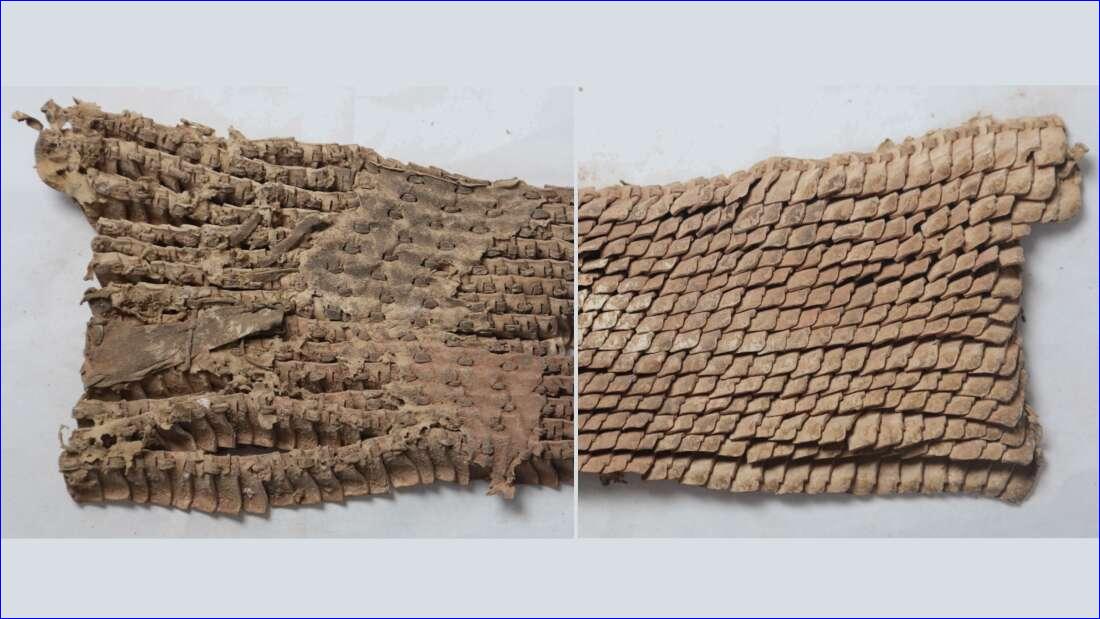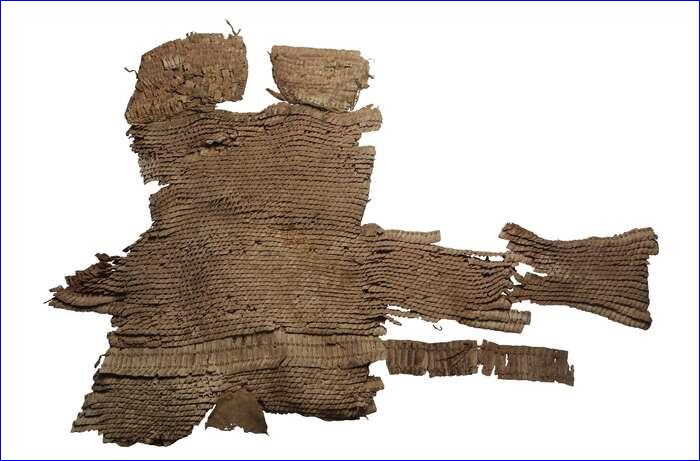


How long do you think it's been this way? The answer may surprise you: according to a new study published in the journal Quaternary International, a piece of nearly 3,000-year-old armor found in Yanghai cemetery, Northwest China, may have originally been manufactured in the Neo-Assyrian Empire -- a land that covered parts of modern-day Iraq, Iran, Syria, Turkey and Egypt.
"Even though we can't trace the exact path of the scale armor from Assyria to Northwest China," commented lead author Patrick Wertmann, "the find is one of the rare actual proofs of West-East technology transfer across the Eurasian continent during the early first millennium BC."
The armor, dated to between 786 and 543 BC, was originally discovered in 2013, in the tomb of a 30-ish-year-old soldier -- but how it got there was something of a mystery. It's what's known as "scale armor": a nearly whole-body outfit originally made of more than 5,500 individual leather scales arranged together horizontally, much like you can still see today in some bullet-proof vests, and to see it in China is ... unusual, the study explains.
Before the 2013 discovery, "no complete scale armor of [any] material ... had been excavated in the wide area from the Mediterranean to the Yellow Sea," the authors explain, noting that the style was "regarded as foreign in China." And while the Yanghai discovery changes the situation "dramatically," the study notes that it is still an extremely rare find.
"Noticeably, no scale armor, not even a single armor scale of leather or other material, were found in any of the other 520 excavated tombs of the Yanghai cemetery," the authors point out. "Nor are any finds of scale armor known from other archaeological sites of the second and early first millennium BC in Northwest China."
But that's not all that makes the find remarkable. It's extremely rare for armor to survive this long -- only one other complete example of leather scale armor is known today, and it's too fragile to study in its entirety. It's only thanks to Northwest China's particularly arid climate that the Yanghai armor hasn't already rotted away.
And then there's the style of the armor itself. Scale armor is far from unknown in the ancient world, but in terms of the specifics of this piece -- the size and shape of it, the construction and arrangement, and so on -- there "is currently no direct parallel to the Yanghai armor anywhere in the world," the paper notes. Except one: "the example in the Metropolitan Museum of Art."

 D.L. Xu, P. Wertmann, M. Yibulayinmu)
D.L. Xu, P. Wertmann, M. Yibulayinmu)
That piece, stored in New York's MET, has been radiocarbon dated to between the eighth and fifth centuries BC -- though its geographical origin has remained unknown. But it has striking similarities to the piece discovered in Yanghai: it's from the same time period, it follows the same pattern and design, it's made from the same materials, and even has the same red edging to the scales. In fact, the only things obviously different are the addition of a leather skirt and a stiffer, stronger torso to the MET example.
Those details say a lot, the researchers believe. "The stylistic correspondence but slightly differing functional specifics suggests that the two armors were designed as outfits for different units of the same army," they explain.
The time period from which the two armors date was "pivotal" to human development in many ways, one of which was the development of cavalry units in armies. With horse-drawn chariots came this scale armor, the researchers note, and they suspect that the Yanghai warrior may have been one of these new cavalrymen. The MET armor, on the other hand, bears the hallmarks of light infantry -- and that reveals something very important.
"Such a degree of standardization of military equipment about the 8th to 5th century BC was only reached by the Neo-Assyrian army," the authors explain, "when the importance of heavy infantry and cavalry (and possibly, the production of scale armor) reached its peak."
In other words, the fact that these two armors are so similar, yet clearly made for different purposes, means they must have been Neo-Assyrian -- nobody else at the time had the technology and resources to mass produce equipment like this. And while there's still a lot to unravel -- it's not known exactly how the armor got to China, for instance, or exactly where it was originally crafted -- it's pretty amazing that one super-rare discovery has solved two mysteries like this.
"The first millennium BC was pivotal for the environment and for human societies in Central and Eastern Eurasia ... Empires with enormous outreach and gravitational pull formed and disintegrated in close dependence," the paper explains. "[W]e suggest that the place of manufacture of both armors was the Neo-Assyrian Empire ... [meaning] the Yanghai armor is one of the rare actual proofs of West-East technology transfer across the Eurasian continent during the first half of the first millennium BC."

or register to post a comment.